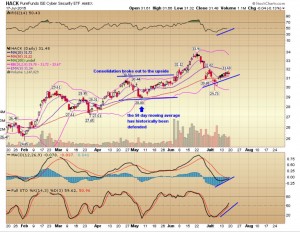It seems like every other day there is an announcement of a massive data security breach. In the first half of 2014 there were 395 breaches alone that included some big organizations like Target, Niemen Marcus, and the Nuclear Regulatory Authority.
Three separate universities (Maryland, Wisconsin and Iowa State) have been victims of security breaches in which hackers gained access to Social Security and credit card numbers, health records, and other sensitive information. The breach that the Office of Personnel Management recently suffered was also massive in scale and scope.
Change is afoot, though. By October 2015, retailers must upgrade to point-of-sale systems and banks and other institutions must take part in the EMV migration. In short, systems will be more difficult to clone and hack for fraudulent purposes.
Unfortunately, from now until then, the volume of breaches is expected to rise as cybercriminals attempt to steal as much data as possible while they still can. As in any crisis, there is a solution – and a trading vehicle to profit from this unfortunate trend.
Bank options trading profits with an ETF
There are numerous individual stocks in the cybersecurity sector that you could purchase. Each is priced differently and each specializes in a different area of cybersecurity. The granddaddy of your choices is Palo Alto Networks (PANW). Palo Alto Networks trades at $191.19, though, so if you have a smaller portfolio, you are likely limited to the number of shares you can purchase.
Therefore I favor the ETF approach for this sector. Purchasing an ETF offers you an easy way to own a diversified range of assets within one basket. They are bought and sold like a single stock, they have nice liquidity, and they are pretty transparent – you know what is in the basket in real-time, you can be long or short, and you can even trade options.
My pick is the PureFunds ISE Cyber Security ETF (HACK), an equal-weighted index that targets both hardware and software on one tier and cybersecurity service companies on the second tier. This ETF has international exposure, and its top 5 holdings are FireEye (FEYE), CyberArk Software Ltd (CYBR), Infoblox Inc. (BLOX), Palo Alto Networks, Inc. (PANW), and Fortinet (FTNT).
Then there’s the price point. Considering that one share of PANW trades at $191 while HACK trades at $31.50, there is no contest which to buy. You can hold a position in HACK at an appropriate size for your portfolio, and you will get exposure to the other leading stocks in the sector. It eliminates the “right church wrong pew” syndrome.
Let’s take a look at the chart:
On the left, you can see that the 50 day moving average has historically been a relevant support and the price is there now. Plus, it continues to meander to the upside. Meanwhile, the Moving Average Convergence Divergence (MACD) is ready to cross up and create a buy signal. The histogram has been stair stepping up, which is a bullish indicator. Relevant Strength is improving. The stochastics are on a buy signal as price has consolidated on the 50 day moving average.
Because HACK is sitting on support, I consider it to be a low risk entry, keeping a stop right under the 50 day moving average. So yes, you can literally HACK your options trading profits with this ETF – and stay on the right side of the law.




















